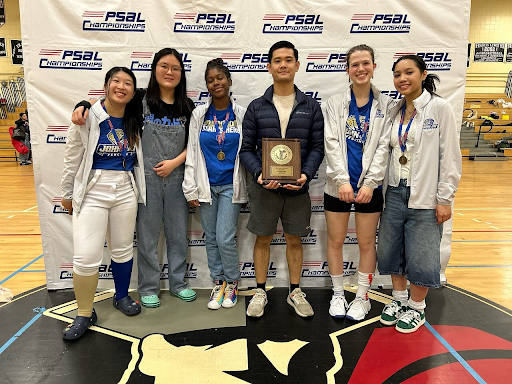In the Final Stretches of Pandemic Learning, What Lies Ahead?
In the Final Stretches of Pandemic Learning, What Lies Ahead?
Caroline Der
The school year is drawing to a close, and yet the atmosphere on the 11th floor is subdued. Gone from the building are the squeaks and shuffles of hundreds of shoes, the cheerful chatter between classmates, and the notoriously long elevator lines. Now, the halls are eerily quiet, the vibrancy diminished. This is the impression that the pandemic has left on Millennium and schools across the country. If you peek into a classroom, you’ll find a handful of students alone at tables that usually seat five, conversing with each other yards apart. For those who have stepped foot in school for the first time in over a year, the experience conjures images of study halls and after school help, in part due to the fact that students meet with teachers in the subjects they most prefer. “In person is very informal,” explains Saya Hashimoto’22, who recently enrolled in blended learning. “I actually prefer it this way, because the teachers are a lot more receptive to your needs, and it’s a very comfortable space.”
Ms. Mazo, however, worries that the current format is unequitable. “I’m really only serving the minority that comes to school. I worry for my remote students. They have a very limited amount of time to talk to me with the Zoom schedule.” Unsurprisingly, the one aspect of school that remains unchanged is the collective reluctance from students to reach out to teachers for support. Remote learning has increased that difficulty tenfold. Even with mental health and emotional wellbeing touted as the key to weathering the difficulties of quarantine, most students are unfamiliar with their dedicated guidance counselor.
For the few that do come to school, one feature is greatly appreciated. Blended learning provides some much needed opportunities for socialization. Zoom classes often give way to excruciatingly long periods of silence, and it is difficult to fend off lingering feelings of discomfort in Breakout room discussions. That’s not the case in person, says Ryah Cozza’22. “It’s much easier to connect with everyone when they are physically in front of me.”
In the face of adversity, it is easy to assume freshmen have endured the worst of this new normal. However, they seem to face the circumstances with grim acceptance. Freshman Marz Dyette, for instance, spoke with me in Mr. Gee’s classroom, where students were completing Deltamath, occasionally aided by Mr. Gee himself. “The workload is sometimes on the verge of overwhelming, but for the most part it’s manageable,” Marz said. And though it is hard to connect with peers he has only briefly conversed with on Zoom -“I think that there should be a way to maximize student interactions”- he appreciates the efforts of his teachers. “I really like biology with Ms. Taylor, and Mr. Gee is great with giving us supplemental work and re-teaching lessons with harder concepts.” Hudson Gazdak, also a freshman, emphatically agreed. “Considering everything, I think it’s alright.” he said.
Things at Millennium could certainly go worse than “alright”. Even so, many students and teachers harbor hopes that we will return to “normal” (or, rather, adjust to a lifestyle that contains the vestiges of the past school years) in the fall, hopes that seem increasingly realistic considering the push for teens to be vaccinated. Says Mr. Gee in a sentiment that is most likely shared by all, “I just can’t wait for next year.”




